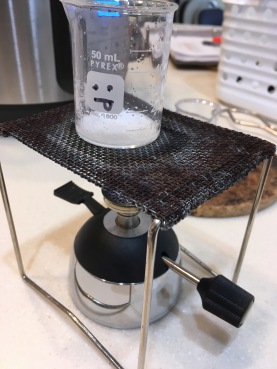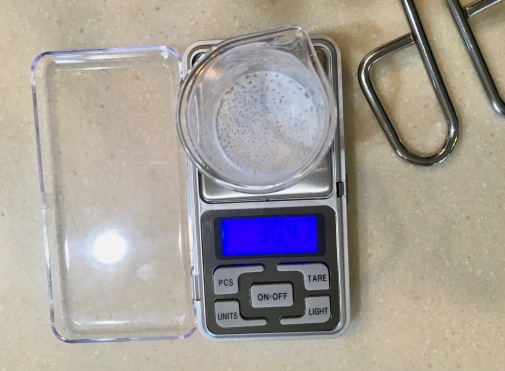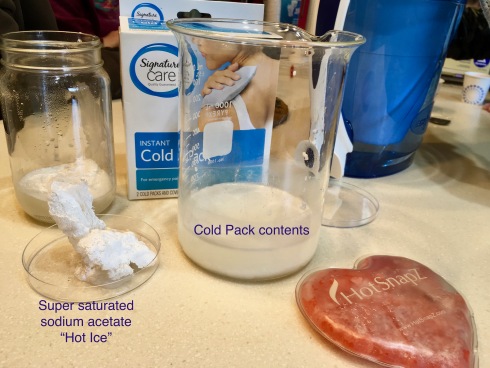This lab is pretty much a repeat of the lab last week but students had two different chemicals, potassium chloride (KCl) and calcium chloride (CaCl2), to dissolve in water while they observed the temperature change. Using the same equation as last time, Δ H = mc Δ T, where m is the mass of the water in the calorimeter (styrofoam cup), c is the specific heat capacity of water (4.184J/g°C)and ΔT is the temperature change, they calculated the heat of solution. The lab, IX-1: Determine Heat of Solution, 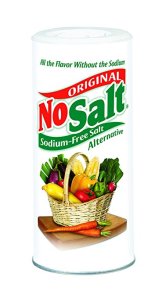 in the homescientist chemistry manual used plain NaCl but a lab I did with the middle school class showed pretty big temperature changes with KCl and CaCl2 so I had the students use those instead and had them figure out how much solute and solvent (water) they should use for their experiment. There’s no real right answer for this, as long as the quantities they decide on are reasonable. The final number they’re trying to calculate is the molar heat of solution so if they use a tenth of a mole of the solute, they just have to move the decimal over one place at the end, which is what most of them decided to do.
in the homescientist chemistry manual used plain NaCl but a lab I did with the middle school class showed pretty big temperature changes with KCl and CaCl2 so I had the students use those instead and had them figure out how much solute and solvent (water) they should use for their experiment. There’s no real right answer for this, as long as the quantities they decide on are reasonable. The final number they’re trying to calculate is the molar heat of solution so if they use a tenth of a mole of the solute, they just have to move the decimal over one place at the end, which is what most of them decided to do.
For KCl, students used 7.5 grams of NoSalt, which is mostly KCl but not 100%, so the values we determined for the heat of solution are going to a bit different than accepted values for pure KCl. Same goes for the calcium chloride, it was not a pure chemical, but DampRid purchased at 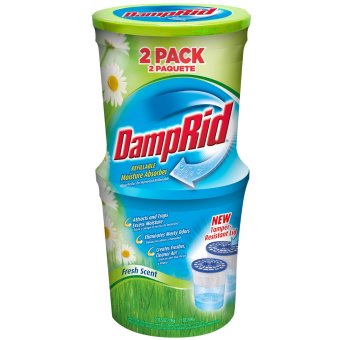 Lowes. The amount of water used varied from 50 ml to 200 ml, but all groups saw very noticeable temperature changes and got decent values for the molar heat of solution. I had each group do both chemicals because one is exothermic and one is endothermic.
Lowes. The amount of water used varied from 50 ml to 200 ml, but all groups saw very noticeable temperature changes and got decent values for the molar heat of solution. I had each group do both chemicals because one is exothermic and one is endothermic.

